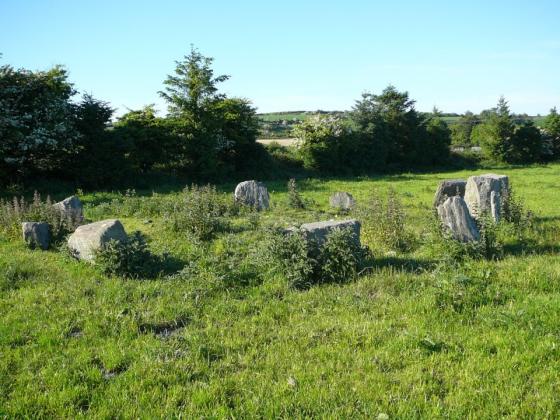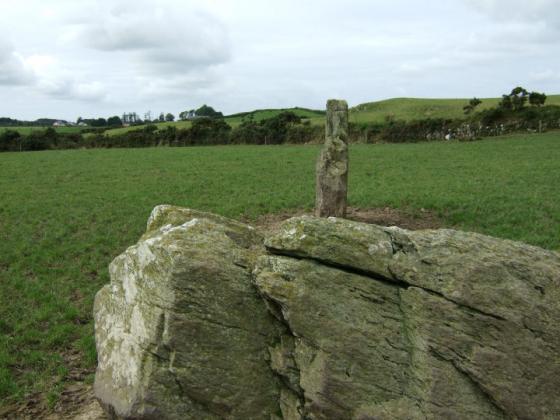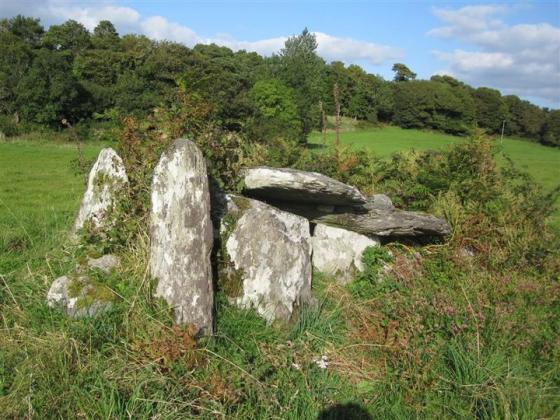Mired in the remnants of a junction of field fences, on a low rise above a by-road and about 1km ENE of the four-poster at Lettergorman N, this is the only wedge-tomb in the Argideen/Rosscarbery area. It is located a considerable distance south and east of the general concentrations of its class, at the northern edge of the circle/row/boulder-burial ‘complex’ that dominates the land east of Carrigfadda. Views from this position are long to the east, north and west, but bounded to the south by the rise to Knockawaddra. The tomb itself opens out (roughly) WSW, towards a point north of Kippagh.
Only three standing slabs, of the four mentioned in the Inventory, are visible. One to the north of the gallery and two, of the recorded three, at the southern side. These two stones form the shade of what must have been a substantial double-wall. At least a couple of small boulders, one ended in quartz, are wedged tightly between them, but it’s unclear whether or not these were original fill. All three side-stones lean over to the north and a large block props the southernmost slab at its base.
A stout quartz-ended boulder at the eastern tip of the monument is surely too low to be the ‘displaced backstone’ and there is no sign of the prostrate ‘displaced sidestone or roofstone’ in the heavy surrounding growth.
Beyond the north-eastern corner of the field, on the other side of an old track that leads east from the by-road, is an enigmatic, blade-like standing stone; 2.25m high and aligned NNE-SSW, called ‘The Pillar’. If the intervening hedges were removed the two monuments would occupy, but at a polite distance, the same space; a juxtaposition similar to the circle/row and wedge-tomb at Glantane N.
Given Dr. William O’Brien’s discovery of a prolonged use-history at Altar wedge-tomb, it may be worth considering the possibility that this pillar was a Late Bronze Age attempt to share what must have been judged an important, unique location. Or, perhaps, to link it with the ritual-centres on the other side of the hill. A line projected SSW from its main axis cuts east of the Knockawaddra rows, across the Glashagloragh valley towards Glanbrack.
Archaeological Inventory of Cork, 1992; No.34, 18 (wedge-tomb); No.452, 63 (standing stone).



































































































